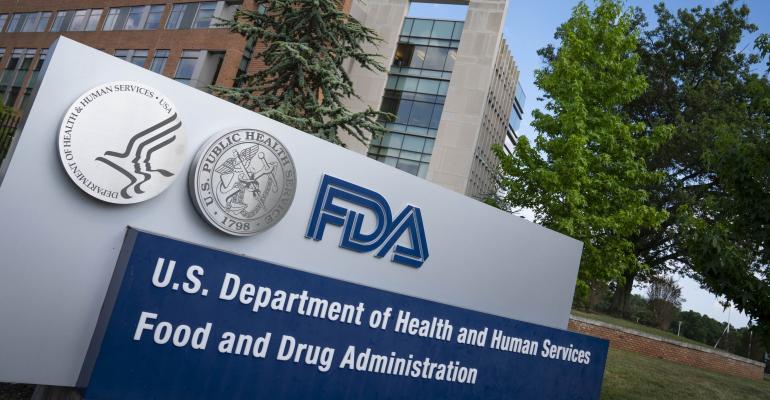Eating continues to cost more even as overall inflation has eased from the blistering pace...
Are Food Recalls and Outbreaks on the Rise?

The Food and Drug Administration said recently that the U.S. food supply is still "one of the safest in the world," in the wake of a number of foodborne disease outbreaks affecting items ranging from organic carrots to deli meats to McDonald's Quarter Pounders. E. coli, listeria and other contaminants have sickened thousands of people and forced a number of recalls in recent months.
But despite those high-profile examples, data cited by the FDA suggest recalls were not unusually high this past year.
For the fiscal year that ended in September, there were 179 recalls deemed by the agency's food and cosmetics arm as being for the highest-risk classification of issues, like potential contamination with bacteria or undeclared allergens. That's up from 145 high-risk recalls in 2023, but less than the 185 the agency recorded in 2022. There were 167 high-risk recalls in 2019.
This classification includes the recall of tens of thousands of cases of onions processed by Taylor Farms that were pulled earlier this fall, after officials suspected they were to blame for a deadly E. coli outbreak linked to McDonald's Quarter Pounder burgers that has sickened more than a hundred people.
"Our ultimate goal is for industry to do their part to ensure that the foods they introduce into the market are not adulterated or misbranded. Recalls help get the food off the market quickly when something goes wrong. Outbreak advisories provide important food safety information to the public," an FDA spokesperson said in a statement.
The spokesperson also pointed to The Economist's report measuring global food security. The U.S. food supply is "one of the safest in the world" and ranked “first for the food safety indicator in 2022," the spokesperson said.
In fact, the FDA suggested, the number of recalls is an indicator that the safety system is working. The occurrence of recalls and outbreaks means that manufacturers, importers and distributors are monitoring for issues and taking action when they detect a problem.
An increase in illnesses in CDC data — but also an increase in testing
Figures from the Centers for Disease Control and Prevention suggest the number of high-profile recalls have increased from last year, though not by much.
So far this year, 10 "multistate foodborne outbreak notices" have been issued by the CDC. Last year there were nine notices. There were 24 notices issued in 2018, the most of any year over the past decade.
Infections from foodborne outbreak culprits like Shiga toxin-producing E. coli, or STEC, have climbed to at least 13,962 this year, CDC records tally. Around 13,140 had been reported by health departments around this time last year and 12,119 were reported by this time in 2019.
Foodborne illnesses linked to other germs have also climbed across the country in recent years, reports by the CDC's FoodNet system suggest, though improvements in how patients are tested for these germs may help explain some of the increase.
"Laboratory technology changes and that impacts what we see in the surveillance data. When laboratory testing gets faster, it gets more specific, it gets better in other ways. It makes the data a little bit less comparable," Sharon Shea, senior director of food safety at the Association of Public Health Laboratories, recently reported.
Shea, who has also worked as a microbiologist in hospital laboratories as well as public health labs, said other ways that public health departments and doctors respond to foodborne outbreaks have gotten better as well. Some of that is a time-saving shift towards "molecular-based" panel tests that can be run by hospitals and clinical labs for an array of germs, instead of one-off tests for specific pathogens, that were rolled out after 2012.
Labs in the PulseNet network helmed by the CDC have also switched to "whole genome sequencing," Shea said — a more accurate approach to narrowing down the unique genetic fingerprint that can link different cases together for investigators. Those connections can be crucial for uncovering common foods eaten by sick people in an outbreak.
EDITOR’S TAKE:
Better tracking, improved testing and quicker reaction times all contribute to Americans having the safest food supply in the world. There was a time, and not that long ago, when the first signal of something awry with the food supply was people getting ill. And then the difficult task of tracing the origin would begin and could take days or even weeks. Today, more in plant testing with improved tests and analysis can often times detect a problem before it reaches the public. Regulators are also paying closer attention to high suspect problem areas. Even if a problem does reach the public, thanks to improved tracking data and better communication channels, the problem can be quickly and effectively dealt with. Could the system be improved further – yes. Blockchain and biotechnology will provide better food safety in the future. In the meantime, be assured that our food supply is safe. Having a safe food supply is critical to our health and well-being. But having new, safe vehicles is also critical to efficient and effective work on the farm or ranch. Keep your inventory refreshed on AgTruckTrader.com® where farmers/ranchers are looking for their next vehicle.







